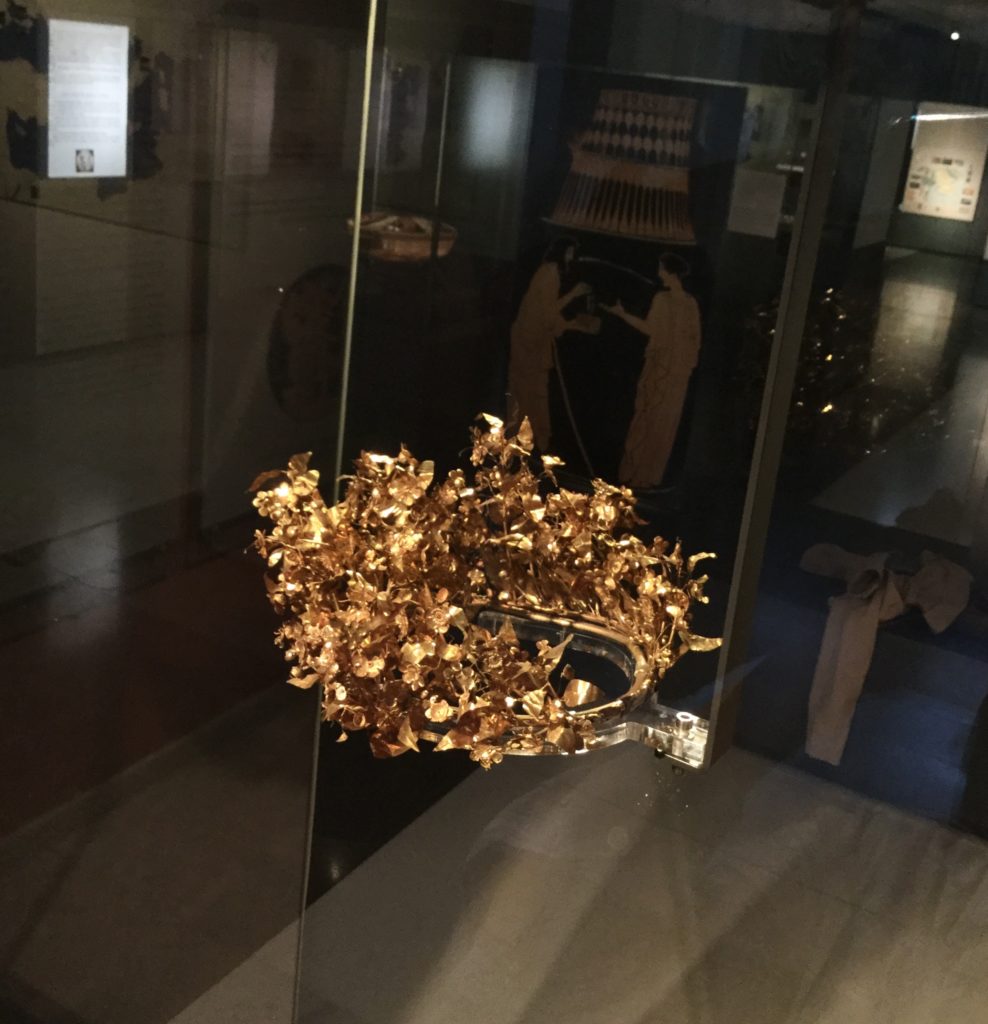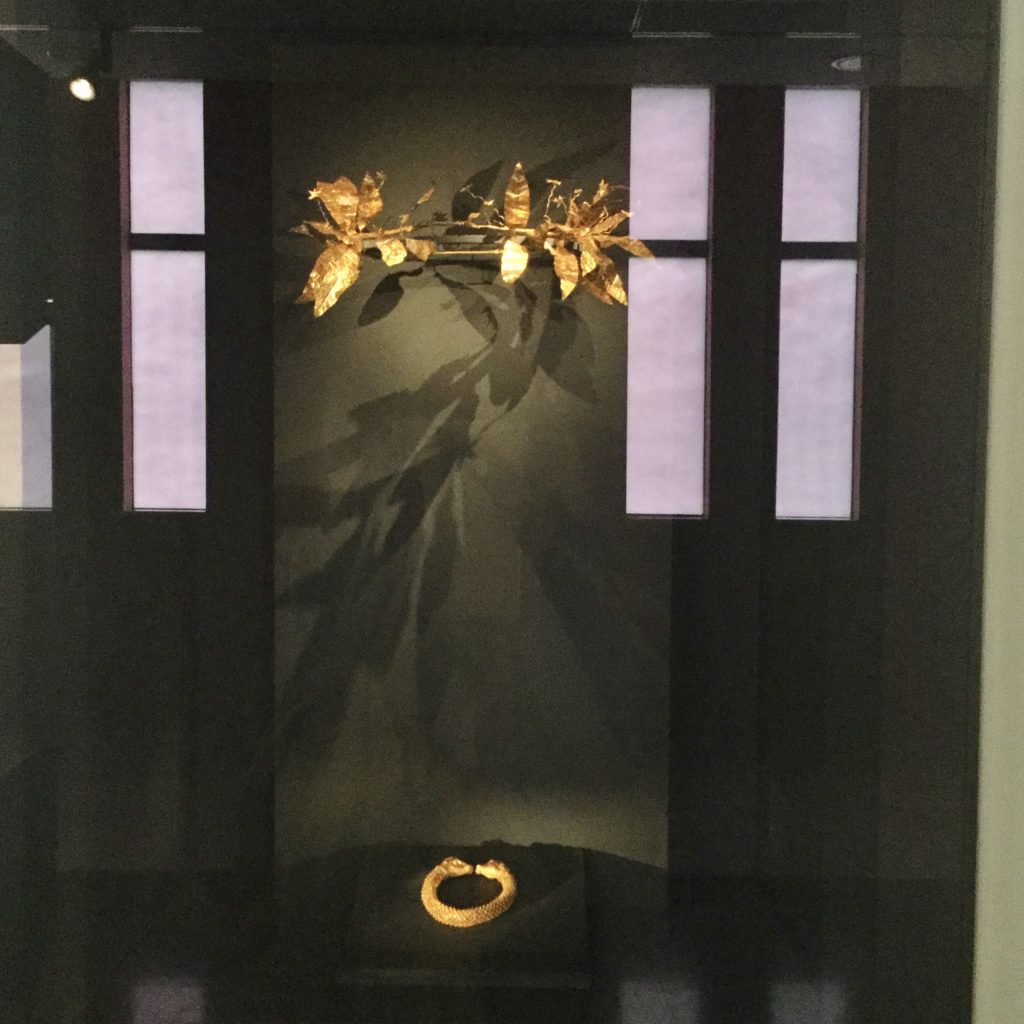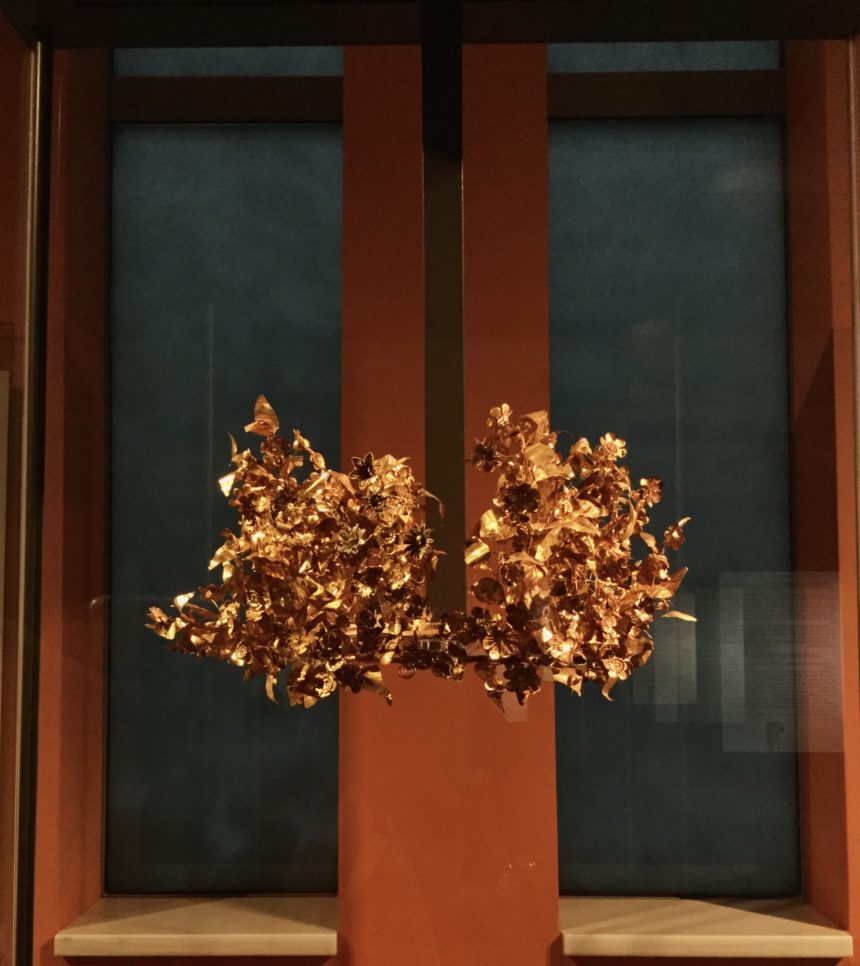From the Ground to a Multi-Million Grey Market
Inside the Archaeological Museum of my birth town, Thessaloniki, the first exhibit you come across in the permanent exhibition, “The Gold of Macedon”, is a gold funerary wreath of outstanding beauty and elegance.Its stylistic and technical characteristics follow the pattern of the time with similar appearance and structure to other gold myrtle wreaths from Northern Greece dating to the end of the fourth century B.C. Taking a closer look just below the wreath, what draws the attention is the museum label that describes the artefact as “A gold blossomed myrtle wreath (350-300 B.C) illicitly traded from Central Macedonia and repatriated in March 2007 from the John Paul Getty Museum after an agreement with the Greek Ministry of Culture”. In reality, it is not a simple story of an illicitly-excavated antiquity that ended up in a foreign museum under questionable circumstances, but part of the greatest scandal in the art world, involving a well-organised antiquities network of famous dealers, high-profile auction houses, and prestigious museums.
An Ancient Greek Wreath in L.A.
The first official appearance of the wreath was in 1993, when the John Paul Getty Museum bought the artefact for $1.15 million, ranking it as one of the museum’s most prized antiquities that ever graced the cover of its antiquities book. Fast forward a few years to 2005, when Nikolas Zirganos, a Greek reporter, received a pile of official documents related to its questionable acquisition and started investigating the case. In the same year, the trial of former Getty antiquities curator Marion True for conspiring to receive looted antiquities illegally exported out of Italy began in Rome. Italian authorities filed formal charges against True based on the documents discovered in the warehouse of Giacomo Medici, an Italian antiquities dealer. When the Italian Carabinieri Art Squad gained access to Medici’s showroom in the Geneva Freeport in 1997, no one could have imagined the number and the value of the objects stored nor the significance of the documents found in the office behind Medici’s storage.

According to the testimony Zirganos found from a Greek artist who lived in Germany, the golden wreath was first offered to him for sale in 1992 in München during a social event. The artist then suggested contacting Christoph Leon, a famous Swiss archaeologist and art dealer, and the then-antiquities curator of John Paul Getty Museum, Marion True. Although Zirganos had found important evidence for the network, he had not proven the involvement of the Museum in the illegal acquisition. That is why he collaborated with two other reporters from the Los Angeles Times, Ralph Frammolino and Jason Felch. The L.A.-based reporters discovered internal Getty documents, which disclosed that the organisation was aware that much of the art bought since the 1980s has likely been looted. Among those documents, there were several references to a gold funerary wreath, one of the most precious and loved items of the Museum.
At the beginning of 2006, Zirganos found a letter from Thessaloniki sent to an Italian smuggler, where an image of the golden wreath was attached. Eventually, with evidence that the antiquity had been looted from Greece, the Greek Ministry of Culture could claim its repatriation from the Getty Museum. After a year of negotiations between the Getty and Greece, the wreath returned to its country of origin and was housed in the collection of the Archaeological Museum of Thessaloniki in 2007. The True trial in Rome ran for more than five years until October 2010, when the criminal case was dismissed because the statute of limitations on all charges had expired.
Looting Means Losing
Back in the Archaeological Museum of Thessaloniki, at first glance, the wreath is placed in a prominent position, allowing the visitor to admire its beauty. But something feels off, as there is a sense of loneliness. Walking through the Museum, one notices that the exhibits are presented in compositions. The pieces are grouped according to their past, based on their documentation during the excavation process by licensed archaeologists, following the appropriate methods and practices. This is not the case with the gold funerary wreath. It is impossible to know the backstory, the exact place where it was found, who was buried with it (likely a female aristocrat of the time), and what the rest of the funeral gifts disclose.

Photo: Katerina Ampela 2022
The illicit excavation and trafficking of antiquities detach cultural goods from space, time, and history. The loss of archaeological evidence results in the distortion of the past, stopping archaeologists from shaping a clear and complete understanding of the events. In reality, it is not only a loss for the scientific world but a pillage of our cultural identity that urges the change in the buying policy of cultural goods by museums, collectors, and galleries.
To conclude, it is safe to say that being ignorant of the past certainly makes us ignorant of the future.
XXXXXXXXXXXXXXXXX